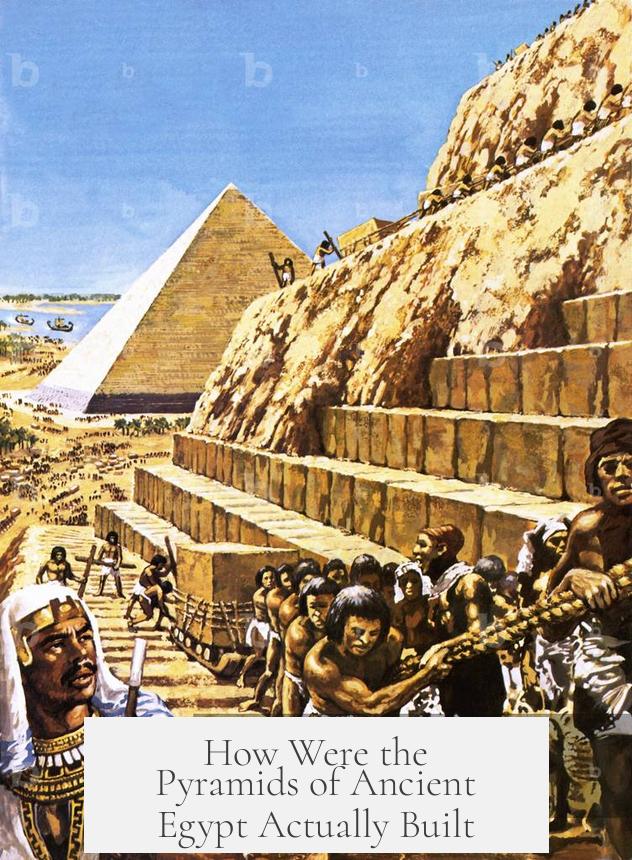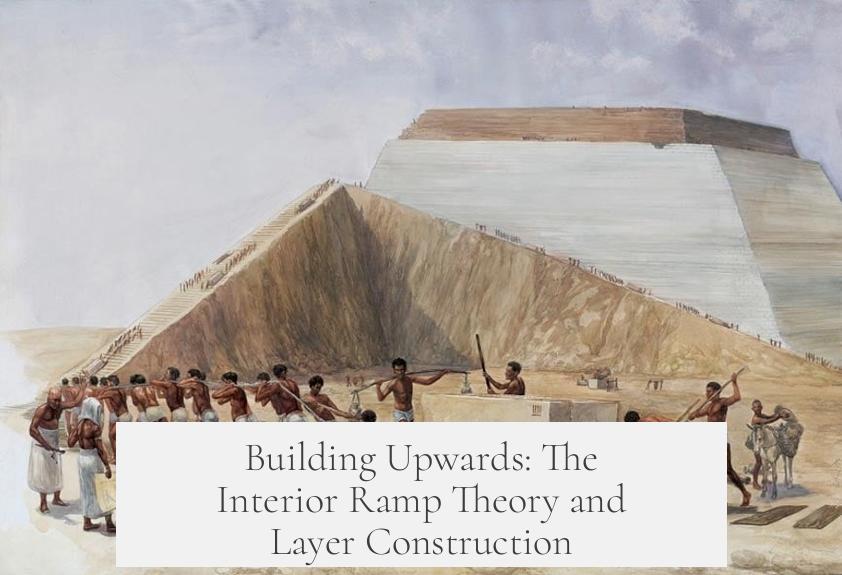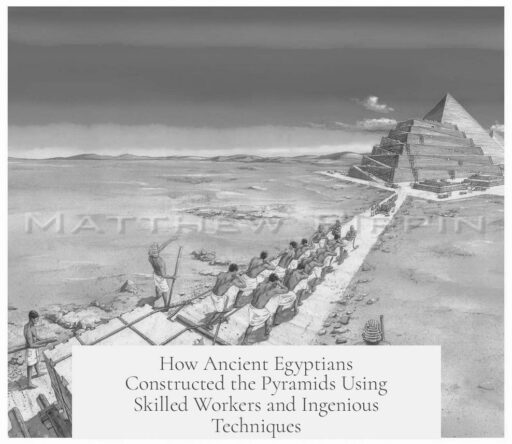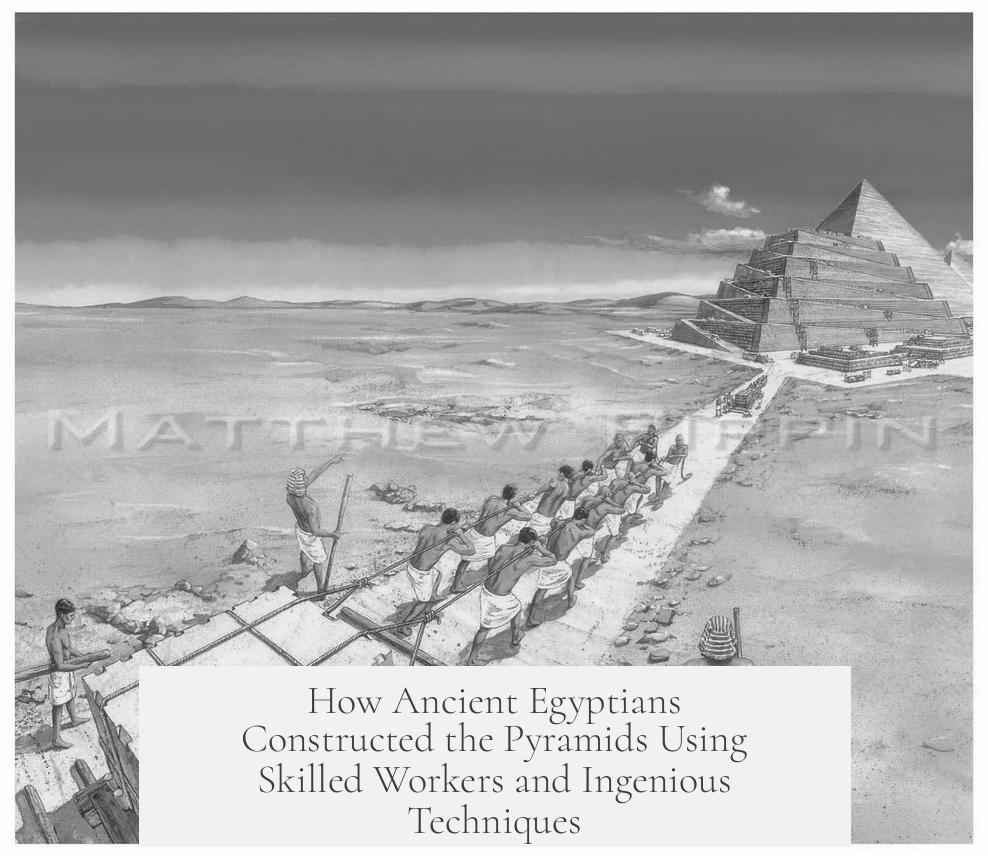The Pyramids of Ancient Egypt were primarily built by skilled Egyptian citizens using advanced engineering and labor organization, not predominantly by slaves. Construction methods likely involved creating the pyramids layer-by-layer with earthen ramps and possibly an internal spiral ramp, while stone blocks were transported using innovative techniques including water channels and friction reduction.
Most experts agree that the labor force consisted mainly of seasonal workers—Egyptian citizens who worked during the agricultural off-season. This system allowed workers to develop specialized skills like carving and building, supporting the project as both a trade opportunity and a religious honor. The common notion of mass slave labor has been largely debunked. Maintaining a permanent slave workforce would have been expensive and inefficient compared to seasonal hired laborers.
Regarding construction, the Interior Ramp Theory presents a compelling explanation. Architect Jean-Pierre Houdin proposed that a ramp spiraled upward inside the pyramid, allowing workers to haul stones internally as the pyramid rose. Ground-penetrating radar (GPR) scans have detected low-density spiral formations in the Great Pyramid’s structure, which align with Houdin’s theory and suggest tunnels once existed but were later filled.
Alongside internal ramps, external earthen ramps likely played a critical role. Workers probably dragged heavy limestone and sandstone blocks on wooden sledges up these sloping ramps, stacking one layer at a time. This method fits well with the pyramids’ geometrical precision and gradual shape.
Transportation of stones from quarries also featured remarkable innovations. The Nile River flowed nearer to Giza during pyramid construction, and Egyptians redirected its waters using dams and channels. They floated blocks on rafts and moved them inland by reducing friction. Wetting the sand in front of sledges notably decreased resistance, making it easier to haul massive stones. This approach resembles a slick, watery surface beneath the load, facilitating smoother movement.
Techniques like water transport combined with ramps and logistical planning highlight the Egyptians’ engineering ingenuity rather than reliance on brute force labor.
- The pyramids were built mainly by seasonal skilled workers, not slaves.
- Layered construction used earthen ramps and possibly an internal spiral ramp.
- Water channels and damming enabled stone transport via the Nile.
- Friction-reducing techniques eased hauling heavy blocks on sledges.
How Were the Pyramids of Ancient Egypt Actually Built?

So, how on Earth did the ancient Egyptians build the monumental pyramids, especially the Great Pyramid of Giza? The short answer: it was a *brilliant* mix of clever engineering, skilled labor, and a dash of seasonal teamwork rather than the age-old myth of a vast army of slaves pushing stones uphill. Let’s dig deeper and uncover the real story behind these timeless wonders.
The pyramids are not just piles of rock; they’re incredible feats of human ingenuity. Imagine you’re an Egyptian farmer during the off-season, taking a break from your fields. Instead of idling, you join a community of workers carving, hauling, and assembling these gargantuan stone blocks. It’s not forced labor but a seasonal job, a *craft* and an honor rolled into one. This approach ensured a skilled labor force and saved the kingdom from the impractical cost of maintaining thousands of slaves year-round.
Debunking the Slave Labor Myth: Egyptians as Skilled Citizens
You’ve probably heard the dramatic tales of slaves toiling endlessly, whipped by overseers, to build the pyramids. While popular, this idea is mostly a myth. Archaeologists and historians now agree that most workers were actually Egyptian citizens. They worked during the agricultural off-season, giving them stable employment and practical skills beyond farming.
Security and evidence of well-maintained workers’ camps suggest these laborers were respected professionals, not maltreated slaves. They learned trades like stone carving, construction, and camp maintenance. Imagine the pride of helping your pharaoh, considered a living god, reach eternal peace through your work. That’s motivation beyond mere wages.
The Magic Behind Moving Massive Stones
Let’s talk about the challenges. These pyramids required moving huge stone blocks weighing several tons each. How did they do it without modern cranes and engines? Here’s where ancient Egyptian ingenuity shines.
The Nile River played a crucial role. Contrary to assumptions, the Nile’s course was closer to the pyramid sites in ancient times. Egyptians cleverly built channels—both vertical and horizontal—to float the stones near the construction site. Think of it like a giant water-based delivery system.
They also rerouted the river temporarily using dams. This redirected flow allowed sandstone blocks to be floated underwater beneath rafts. Floating huge stones underwater reduced their weight and friction, making transportation much easier. Picture an air hockey table with a bit of water to create slipperiness; that’s how they minimized resistance on land too.
Building Upwards: The Interior Ramp Theory and Layer Construction

Now the tricky part: stacking stone blocks hundreds of feet in the air. Early theories imagined massive ramps snaking around the outside of pyramids. But this would require enormous amounts of material, space, and labor—impractical for the scale of the Great Pyramid.
An exciting and more convincing theory is the Interior Ramp Theory. Architect Jean-Pierre Houdin proposed the pyramid was built using a spiral ramp inside its walls, hidden from view. This ramp would allow workers to haul blocks up as the pyramid rose, layer by layer.
This theory gained serious credence with Ground Penetrating Radar (GPR) scans revealing a low-density spiral structure inside the pyramid. It looks like there was once a tunnel winding upwards, later filled in with a different material. This innovative use of the pyramid’s own bulk for construction is a game-changer in understanding ancient engineering.
Even if internal ramps were used, the common practice was likely a layer-by-layer approach, combining external earthen ramps to place blocks on each new level. Workers dragged the stones on sleds over these ramps, with friction reduced by wetting the sand. Clever and simple, right?
Why Does This Matter? Understanding Ancient Egypt’s Genius
Understanding how the pyramids were built gives us more than historical trivia; it reveals a society that combined community effort, engineering skill, and innovation. It challenges simplistic stories that credit enslaved labor and mythic brute force alone.
The seasonal workforce model shows a sophisticated economy that balanced agriculture and monumental construction. The interior ramp theory reveals engineering mastery previously unimagined. The water transport tactics demonstrate ecological and logistical genius.
If you ever visit Egypt, imagine not slaves but proud citizens climbing those ramps, chipping away stone by stone. You see a shared human accomplishment that resonates through millennia.
What Can Modern Builders Learn from Ancient Egypt?
- Coordination of labor forces during off-peak times maximizes productivity without overworking people.
- Utilizing natural resources smartly, like river transport, saves energy and resources.
- Innovative internal structures like hidden ramps can optimize space and function.
- Layered construction with careful planning creates stability and progress.
These lessons echo today in architectural planning and sustainable building practices.
In Summary
The Pyramids of Ancient Egypt were built primarily by skilled Egyptian citizens during agricultural off-seasons. This pool of seasonal workers learned trades and proudly contributed to a grand spiritual project. The stones were transported via river channels, gently floated underwater, and hauled up layered earthen ramps. The elegant Interior Ramp Theory suggests a hidden spiral tunnel inside the pyramid itself, enabling efficient upward movement of huge blocks.
Forget the myth of endless slave labor. Instead, admire a society that combined intellect, community effort, and practical innovation to build one of the greatest architectural feats in history. Isn’t it remarkable that these stories from thousands of years ago still spark curiosity and inspire modern engineering today?
Next time you see a pyramid, remember: it’s not just stone—it’s a legacy of collaboration, craft, and creativity.




